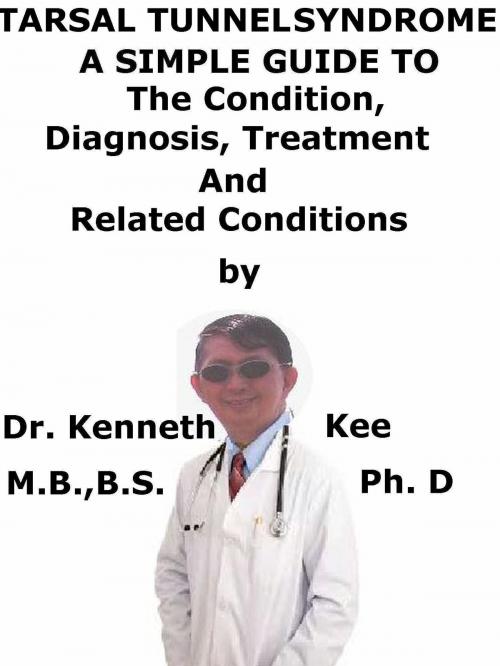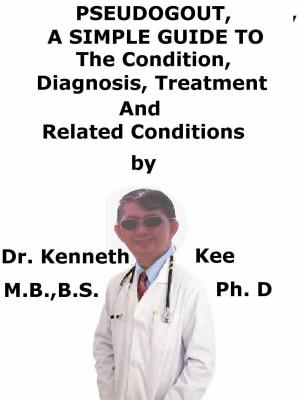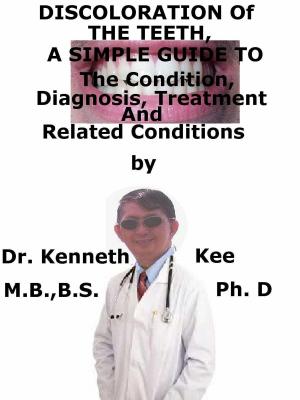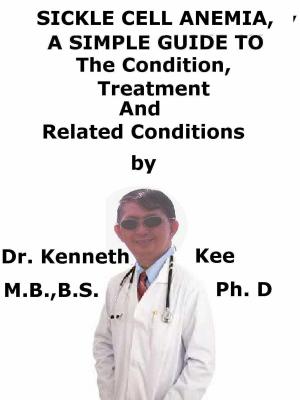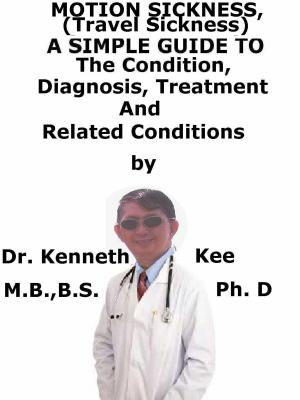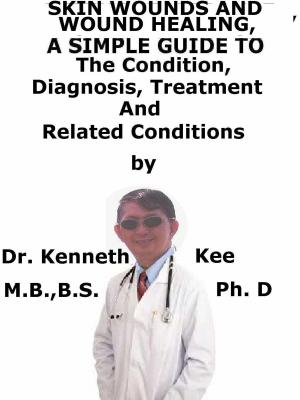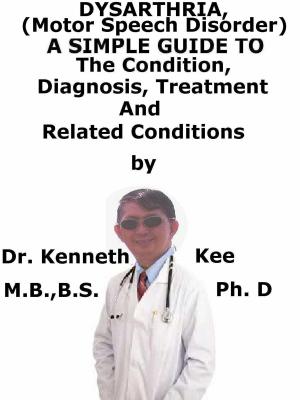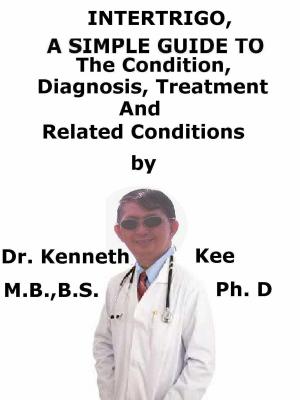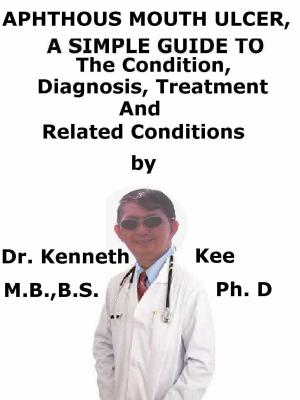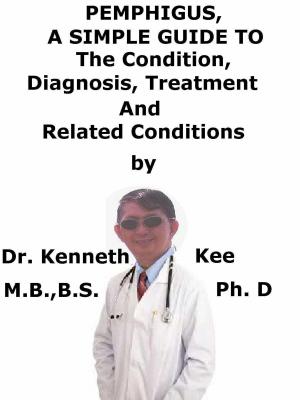Tarsal Tunnel Syndrome, A Simple Guide To The Condition, Diagnosis, Treatment And Related Conditions
Nonfiction, Health & Well Being, Health, Ailments & Diseases, Musculoskeletal, Medical, Specialties, Orthopedics| Author: | Kenneth Kee | ISBN: | 9781370933150 |
| Publisher: | Kenneth Kee | Publication: | October 21, 2016 |
| Imprint: | Smashwords Edition | Language: | English |
| Author: | Kenneth Kee |
| ISBN: | 9781370933150 |
| Publisher: | Kenneth Kee |
| Publication: | October 21, 2016 |
| Imprint: | Smashwords Edition |
| Language: | English |
Tarsal tunnel syndrome is a medical compression neuropathy of the posterior tibial nerve as it passes in the anatomical tarsal tunnel, which is located behind the medial malleolus and beneath the retinaculum of the flexor muscles of the foot.
The tarsal tunnel is a ligamentous sheath that provides protection for the tibial nerve as it travels across the tarsal bones.
Tarsal Tunnel Syndrome happens as a result of pressure on the branches of the posterior tibial nerve behind the medial malleolus and under the retinaculum of the flexor tendons with their inflamed and enlarged synovium.
1. Anterior tarsal tunnel syndrome indicates the compression of the deep peroneal nerve.
It is uncommon and causes pain, muscle weakness, and sensation of the foot and ankle.
2. Distal tarsal tunnel syndrome is caused by compression of the first branch of the lateral plantar nerve or the medial calcaneal nerve and presents with heel pain.
Tarsal tunnel syndrome is most frequent in active adults:
1. Trauma to the ankle
Post-traumatic ankle deformities (scar tissue may also limit movement in the tarsal tunnel and produce nerve entrapment)
2. Tenosynovitis.
When entrapment compresses the nerve, it produces ankle pain and numbness, burning sensation and tingling on the sole of the foot.
Symptoms are normally unilateral.
Symptoms may be worse at night.
Diagnosis will include:
1. A comprehensive medical exam
2. Electrical testing (EMG or nerve conduction study)
Electromyography (EMG) and nerve conduction tests may be useful in confirming the diagnosis.
3. Imaging (X-rays, CT, or MRI scans)
MRI scanning may be done to detect any underlying diseases and the specific site of compression.
Diagnosis is essential to estimate the seriousness of the disorder, so the proper treatment plan, including a surgical option, can be considered.
Conservative treatments are orthotics, manipulation and fascial stripping that may be beneficial.
1. Arch supports and wider shoes may relieve the discomfort of tarsal tunnel syndrome.
2. If inflammation of the nerve is producing the compression, non-steroidal anti-inflammatory drugs can be beneficial.
3. Steroid injections may also be effective.
4. Orthotics for related flat feet.
Orthosis (e.g., braces, splints, orthotic devices) may be advised to reduce the compression on the foot and restrict movement that could produce compression on the nerve.
Depending on the seriousness of the disorder, one of some surgical options may be advised, such as:
Surgical decompression by section of the flexor retinaculum should be considered when significant symptoms do not improve with conservative treatment.
Decompression should be done early to prevent nerve fibrosis.
Tarsal tunnel release has been observed to be very efficient in relieving symptoms.
TABLE OF CONTENT
Introduction
Chapter 1 Tarsal Tunnel Syndrome
Chapter 2 Causes
Chapter 3 Symptoms
Chapter 4 Diagnosis
Chapter 5 Treatment
Chapter 6 Prognosis
Chapter 7 Peripheral Neuropathy
Chapter 8 Carpal Tunnel Syndrome
Epilogue
Tarsal tunnel syndrome is a medical compression neuropathy of the posterior tibial nerve as it passes in the anatomical tarsal tunnel, which is located behind the medial malleolus and beneath the retinaculum of the flexor muscles of the foot.
The tarsal tunnel is a ligamentous sheath that provides protection for the tibial nerve as it travels across the tarsal bones.
Tarsal Tunnel Syndrome happens as a result of pressure on the branches of the posterior tibial nerve behind the medial malleolus and under the retinaculum of the flexor tendons with their inflamed and enlarged synovium.
1. Anterior tarsal tunnel syndrome indicates the compression of the deep peroneal nerve.
It is uncommon and causes pain, muscle weakness, and sensation of the foot and ankle.
2. Distal tarsal tunnel syndrome is caused by compression of the first branch of the lateral plantar nerve or the medial calcaneal nerve and presents with heel pain.
Tarsal tunnel syndrome is most frequent in active adults:
1. Trauma to the ankle
Post-traumatic ankle deformities (scar tissue may also limit movement in the tarsal tunnel and produce nerve entrapment)
2. Tenosynovitis.
When entrapment compresses the nerve, it produces ankle pain and numbness, burning sensation and tingling on the sole of the foot.
Symptoms are normally unilateral.
Symptoms may be worse at night.
Diagnosis will include:
1. A comprehensive medical exam
2. Electrical testing (EMG or nerve conduction study)
Electromyography (EMG) and nerve conduction tests may be useful in confirming the diagnosis.
3. Imaging (X-rays, CT, or MRI scans)
MRI scanning may be done to detect any underlying diseases and the specific site of compression.
Diagnosis is essential to estimate the seriousness of the disorder, so the proper treatment plan, including a surgical option, can be considered.
Conservative treatments are orthotics, manipulation and fascial stripping that may be beneficial.
1. Arch supports and wider shoes may relieve the discomfort of tarsal tunnel syndrome.
2. If inflammation of the nerve is producing the compression, non-steroidal anti-inflammatory drugs can be beneficial.
3. Steroid injections may also be effective.
4. Orthotics for related flat feet.
Orthosis (e.g., braces, splints, orthotic devices) may be advised to reduce the compression on the foot and restrict movement that could produce compression on the nerve.
Depending on the seriousness of the disorder, one of some surgical options may be advised, such as:
Surgical decompression by section of the flexor retinaculum should be considered when significant symptoms do not improve with conservative treatment.
Decompression should be done early to prevent nerve fibrosis.
Tarsal tunnel release has been observed to be very efficient in relieving symptoms.
TABLE OF CONTENT
Introduction
Chapter 1 Tarsal Tunnel Syndrome
Chapter 2 Causes
Chapter 3 Symptoms
Chapter 4 Diagnosis
Chapter 5 Treatment
Chapter 6 Prognosis
Chapter 7 Peripheral Neuropathy
Chapter 8 Carpal Tunnel Syndrome
Epilogue
